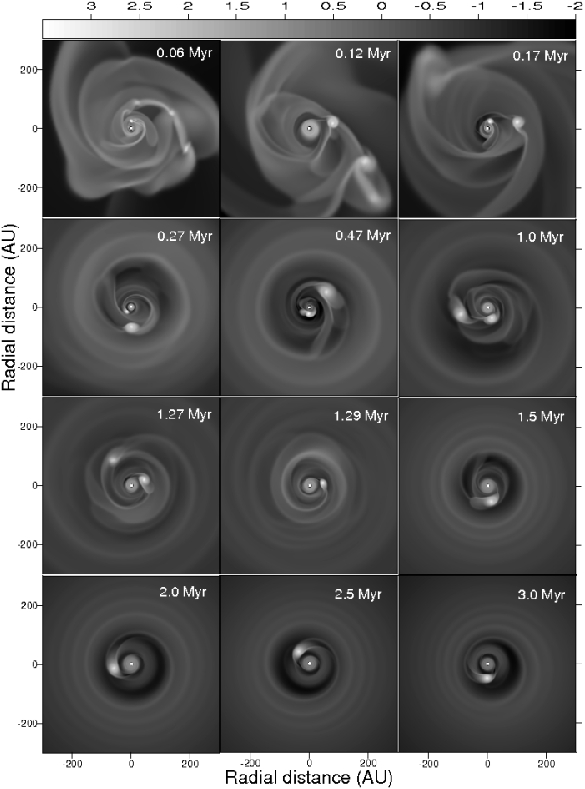| EPoS Contribution |
|
Formation and survivability of giant
planets in the earliest stages of star formation
Eduard Vorobyov The Institute for Computational Astrophysics, Saint Mary's University, Halifax, Canada | |
| The early phases of disk evolution are characterized by a high rate of mass deposition from a natal cloud core. This mass infall can promote gravitational instability and increase the disk propensity to fragmentation. Most forming fragments are driven toward (and probably onto) the star due to angular momentum exchange with spiral arms. Some fragments may survive and evolve into (proto)- giant planets or low-mass brown dwarfs on large (30-150~AU) orbits. The formation of these objects requires specific initial conditions in parent cloud cores, in particular, high rotation rates and specific masses. I will present the latest results showing how giant planets form, open the gap in the disk, and stay on relatively stable orbits for at least several Myr. My numerical hydrodynamics simulations start from a collapsing cloud core and end with a forming planetary system (no sink particles are introduced). | |
 | |
| Caption: Gas surface density distribution (in g cm^{-2}) at different evolutionary times after the formation of the central star (bright circle at the coordinate center). The parent cloud core has the mass M_cl=0.4 Msun and the ratio of rotational to gravitational energy beta=0.01. Two planets are seen forming in the disk, though only one has ultimately survived. The upper limit on the mass of the survived planet is 10 M_J and its radial position is at 47.5 AU. | |
| Collaborators: Shantanu Basu, UWO, Canada |
Suggested Session:
Early Phases of Disks |

